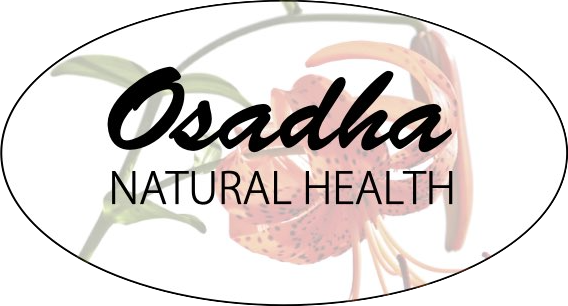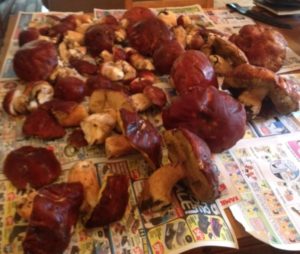I always say that my favorite way to use medicinal mushrooms is to eat them. Sometimes we need stronger mushroom medicine or are working with one that isn’t edible (ever tried biting into Reishi???). Concentrated mushroom powders are a great way to go in these cases. By powders, I don’t mean mushrooms that have simply been ground up. Rather, I’m referring to extracts that are concentrated then dried down into powders. These are also fantastic for folks who have a hard time chugging a bunch of funky-tasting mushroom tea. Like making mushroom double extracts, making powdered extracts is a great way to be healthy while also saving money…commercial mushroom liquid or powdered extracts are expensive!
The way I do it is a slightly modified version that Christopher Hobbs — mushroom expert, herbalist and scientist — shared in his groundbreaking book, “Medicinal Mushrooms”.
How to powder a water extract of your mushrooms!
Don’t fret…it looks like a long list of steps, but it’s not difficult…it just takes some time.
- Start by setting up a mushroom decoction, basically a strong tea. Add 2 pounds of fresh mushrooms or 1/2 to 1 pound dried to a stainless steel or ceramic pot. Add enough water to cover the mushrooms by a few inches. (You’ll likely have to hold them down to check this…mushrooms like to float!).
- Bring to a boil, then reduce heat and simmer* for at least 60-90 minutes. You can put a lid on it, but keep an eye on the water level to make sure that it doesn’t go down by more than a couple inches. Add more water if necessary. *If using Maitake mushrooms (Grifola frondosa), reduce the heat a bit but keep them at a boil rather than a simmer.
- Strain the mushrooms through a natural cloth and toss them back into the pot. Set the decoction aside in something that you won’t knock over and spill (though, maybe you’re less of a klutz than I am). Add more water to the mushrooms that they’re submerged by about an inch (again, you may have to push them down to measure this). Bring to a boil then reduce the heat and simmer for 45-60 minutes.
- Strain again and save the liquid. When they’re cool enough, squeeze the mushrooms to get as much liquid out of them as possible. Toss the mushrooms…they’ll make good compost.
- Rinse any mushroom bits out of the pot and pour both of the mushroom decoctions back in. Bring back to a boil, then reduce heat to bring it to a simmer. No lid at this point. The goal is to carefully cook it down so that all that remains is mushroom sludge (for lack of a better term). This sludge is a concentrated water extract of the mushrooms. Be careful not to overdo it and burn the extract. This may take a few hours. Don’t do what I do and forget about it, only to come home to a dozen firemen in your small condo.
- Turn off the heat and add just enough rice powder to roll the mushroom sludge into pea-sized balls. Go slowly adding the powder. You need just enough to be able to roll the balls, but not so much that they fall apart in the process. Rice powder works better than other options that are more gummy and hard to work with (ask me how I know…).
- Dry them. If you live in a dry climate like I do, you can do this by letting them sit out for a day or two on a cookie tray. Or, you can use a food dehydrator or your oven on 175°, being careful not to forget about them!
- I store the mushroom balls in a glass, airtight container and take 2-6 of them per dose, 2-3 times a day. Or, you can grind them up into a powder and use them to fill size 00 capsules, taking 1-3 capsules 2-3 times a day.
Making powdered mushroom extracts is a pretty long process but once you’ve done it a couple of times, it’s easy peasy and you can work on other thinks while it’s going in the background. You can do mushroom blends and even get crazy and add in medicinal roots, bark and/or seeds!
~~~
Content © Dr. Anna Marija Helt, Osadha Natural Health, LLC. Permission to republish any of the articles or videos in full or in part online or in print must be granted by the author in writing.
The articles and videos on this website for educational purposes only & have not been evaluated by the Food and Drug Administration. This information is not intended to diagnose, treat, cure, or prevent any disease or to substitute for advice from a licensed healthcare provider.

